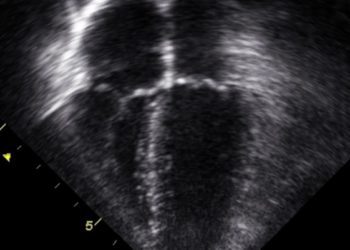Specific BRCA1/BRCA2 mutations linked to breast and ovarian cancer risk
1. Multiple breast cancer cluster regions (BCCRs) and ovarian cancer cluster regions (OCCRs) were identified in BRCA1 and BRCA2 genes and were found to confer varying degrees of risk for breast and ovarian cancer.
Evidence Rating Level: 2 (Good)
Study Rundown: BRCA1 and BRCA2 (i.e., breast cancer susceptibility genes) are human genes responsible for producing tumor suppressor proteins, which help repair damaged DNA. While it is currently recognized that mutations to BRCA1 and BRCA2 increase breast and ovarian cancer risk, our understanding of the influence of single specific mutations in the genes is limited.
The authors of this study consequently aimed to identify the influence of the various types and locations of mutations within these genes by performing an observational study on women identified as having pathogenic BRCA1 or BRCA2 mutations. Several breast and ovarian cancer mutation regions were identified in either gene that were associated with relative increases in breast versus ovarian cancer. Strengths of this study include its large sample size from 33 countries, the absence of exclusion of any races or ethnicities, and the variety of BRCA1/2 mutations examined. The study was limited in that there was inadequate power to fully assess the statistical significance of some of the mutations. Nevertheless, with additional studies further validating these results, the findings of this study may eventually be used in the physician’s office to more accurately determine cancer risk and appropriate preventative measures in women with BRCA1/2 mutations.
Click to read the study, published today in JAMA
Relevant Reading: Variation in BRCA1 Cancer Risks by Mutation Position
In-Depth [retrospective cohort]: This study evaluated 19 581 female carriers of BRCA1 mutations and 11 900 carriers of BRCA2 mutations between 1937-2011 from 33 countries. Relative hazard ratios (RHR) for breast and ovarian cancer were identified, with values over 1 indicating an increased risk of breast cancer and with values less than 1 indicating an increased risk of ovarian cancer. Mean age of breast cancer diagnosis was 39.9 years in BRCA1 mutation carriers and 42.8 years in BRCA2 mutation carriers. Mean age of ovarian cancer diagnosis was 50 years in BRCA1 mutation carriers and 54.5 years in BRCA2 mutation carriers. A BRCA1 ovarian cancer cluster region (OCCR) contained within exon 11 suggested a relative decrease in breast cancer and increase in ovarian cancer risk (RHR 0.62; 95%CI 0.56-0.70; FDR-corrected p = 9×10−17). Mutations occurring in the 5′ and 3′ regions of BRCA1 resulted in a relative increase in breast cancer risk and a relative decrease in ovarian cancer risk, defining two breast cancer cluster regions (BCCRs). Similarly, a BRCA2 OCCR was uncovered to increase risk of ovarian cancer vs. breast cancer (RHR 0.51; 95%CI 0.44-0.60; p = 6×10−17). Three BRCA2 BCCRs were found to increase breast cancer risk while decreasing ovarian cancer risk.
Image: PD
©2015 2 Minute Medicine, Inc. All rights reserved. No works may be reproduced without expressed written consent from 2 Minute Medicine, Inc. Inquire about licensing here. No article should be construed as medical advice and is not intended as such by the authors or by 2 Minute Medicine, Inc.





![Small molecule drug may improve cancer-killing efficacy of oncolytic virus [PreClinical]](https://www.2minutemedicine.com/wp-content/uploads/2015/04/Microtubules_in_the_leading_edge_of_a_cell.tif-75x75.jpg)



